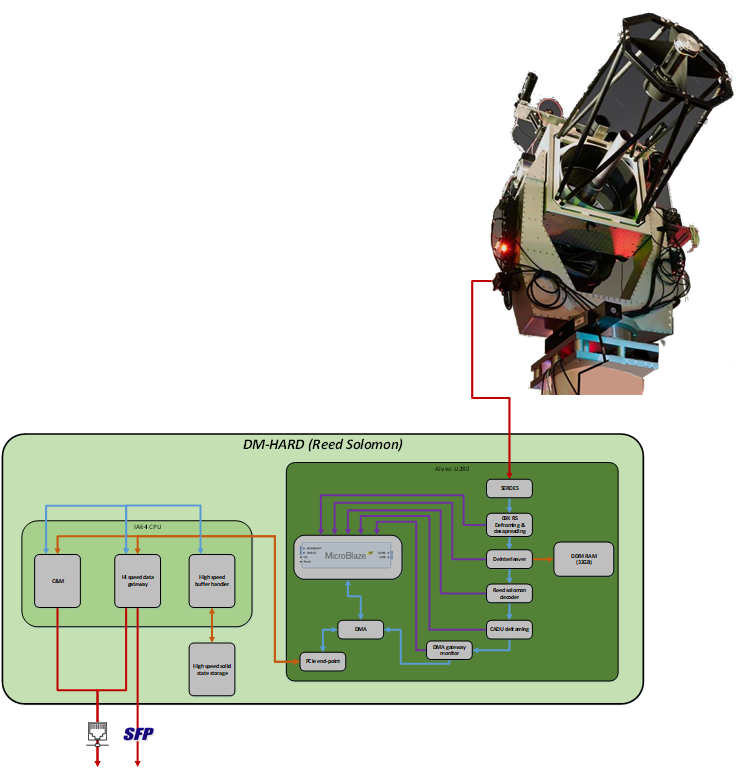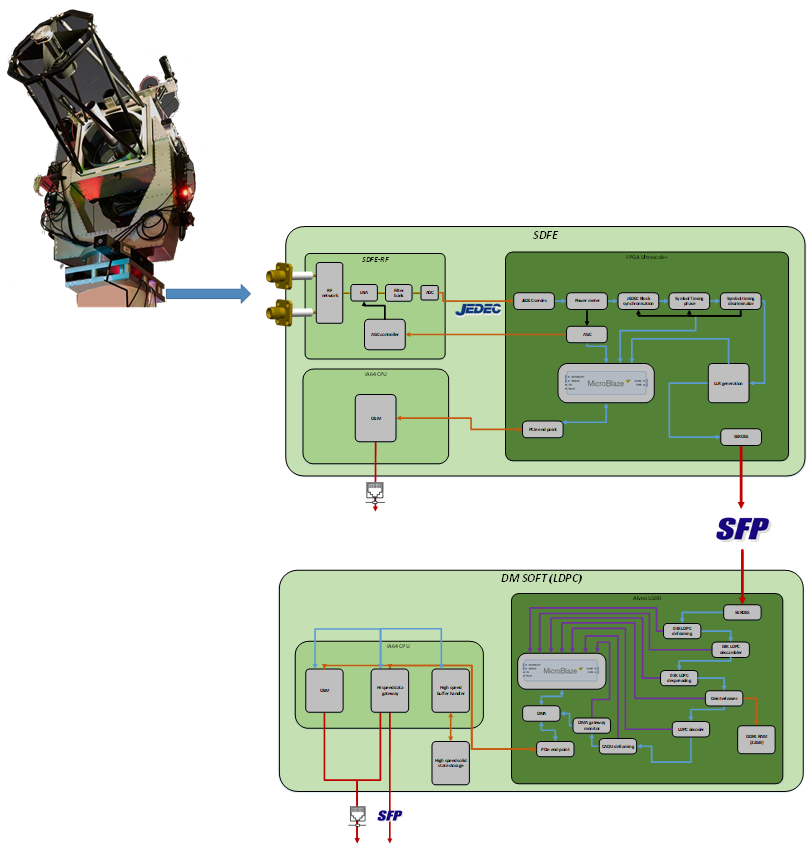
-
StatusOngoing
-
Status date2022-02-24
-
Activity Code6C.010
The M3O optical receive only modem project will develop a prototype multi-mission optical modem (M3O), DOG-1 modem, capable of receiving, decoding and buffering CCSDS standardised free space optical waveforms. The DOG-1 modem will be first unit in the DOG suite of products and this project will prototype the DOG-1 modem and allow technology de-risking and functional testing of the technology required for the DOG-1 modem.
The most significant challenges in this project are to design and implement an analogue interface to an ultra-high bandwidth optical detector, and implement a soft decision decoder compliant to the CCSDS specification, that is capable of a decode rate of 10 Gbits/s.
DOG-1 is part of the Work Microwave Digital Optical Ground-station (DOG) suite of products designed to receive and decode Free Space Optical communication from space terminals such as CubeLCT, T-Osiris, OPTEL-µ, CAT. The DOG-1 modem offers hard or soft decision decoding, serving both high a low intensity laser signal reception. Its modular design allows the sensitive detection process to be done at the telescope and the remainder of the processing done up to 2km away. DOG-1 also offers the capability to buffer huge amounts of decoded data for later retrieval by the Central Processing Facility.
- High and low laser intensity reception
- High sensitivity detector interface
- CCSDS 142.0-B-1 compliant
- Supporting DTE links
- Supporting soft-decision O3K decoding
- Max decoding rate up to 10Gb/s
- High capacity storage up to 1 TB
- Modular design
- Designed for ARQ, VDR, VCM for future expansion.
Two complementary architectures are proposed to receive and decode high and low intensity laser signals.
High intensity signals can be connected to a low cost detector and fed directly to the Digial-Module (DM) for Reed Solomon (RS) decoding, shown below:

Low intensity signal require a more sensitive treatment. The optical signal is captured using a high-sensitivity detector. The resulting differential analogue electrical signals are fed into the Soft Decision Front End (SDFE) for timing recovery. The re-sampled signals are digitally passed on to the DM, now in “soft decision mode” for LDPC decoding:

The project will follow a familiar waterfall project process, split across Definition and Technology development phases:
- System Requirements Review, Q4 2021: Technical and customer requirements.
- Mid-term Review, Q1 2022: Finalisation of requirements.
- Phase Completion review, Q1 2022: Preliminary design, interface specification, LDPC decoder white paper.
- Detailed Design Review, Q3 2022: Critical design of Digital and Analog elements, Critical Design of the high performance LDPC decoder.
- Test Readiness Review, Q4 2022: Gating milestone to proceed to validation
- Final project review, Q1 2023: Final review and readiness for product realisation.
The activity was kicked off in August 2021 and has achieved the System Requirements Review (SRR) and Mid-term Review (MTR) on February 2022.
Work currently in progress.



